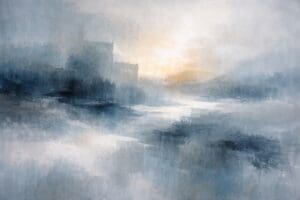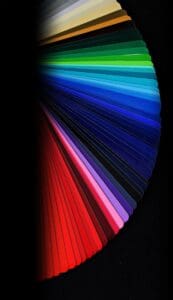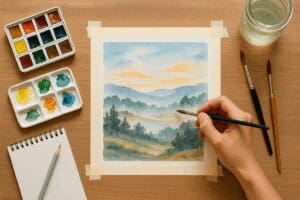Abstract art, a movement that broke away from traditional representations, allows artists to express their vision through shapes, colors, and forms. One of the most compelling subsets of abstract art is geometric abstraction. This technique uses geometric shapes, patterns, and lines to create compositions that are often non-representational. In this blog post, we will explore the history, techniques, and notable artists of geometric abstraction, providing insights for both art enthusiasts and budding artists.
The Origins of Geometric Abstraction
Geometric abstraction emerged in the early 20th century as artists sought new ways to express the modern experience. It was a reaction against the conventional forms of art, which were seen as inadequate to depict the rapidly changing world. Key movements that contributed to the development of geometric abstraction include Cubism, De Stijl, and Russian Constructivism.
- Cubism: Pioneered by Pablo Picasso and Georges Braque, Cubism fragmented objects into geometric shapes and presented them from multiple perspectives. This departure from traditional perspective laid the groundwork for abstract thinking in art.
- De Stijl: Originating in the Netherlands, De Stijl artists like Piet Mondrian and Theo van Doesburg embraced a minimalist approach, using straight lines, right angles, and primary colors to create balanced and harmonious compositions.
- Russian Constructivism: Artists like Kazimir Malevich and El Lissitzky utilized geometric forms to express utopian ideals. Malevich’s “Black Square” is a seminal work that exemplifies the power of geometric abstraction.
Techniques in Geometric Abstraction
Geometric abstraction relies on a variety of techniques to achieve its visual effects. Here are some methods used by artists to create compelling abstract works:
1. Use of Simple Shapes
At the core of geometric abstraction is the use of basic geometric shapes such as circles, squares, triangles, and rectangles. These shapes can be arranged in endless configurations to create complex patterns and designs.
2. Symmetry and Asymmetry
Balancing symmetry and asymmetry is crucial in geometric abstraction. Symmetrical compositions convey a sense of order and stability, while asymmetrical arrangements introduce dynamism and tension.
3. Color Theory
Understanding color theory is essential for geometric abstraction. Artists often use contrasting colors to create visual interest or employ a monochromatic palette to focus attention on the form and structure of the composition.
4. Repetition and Pattern
Repetition of shapes and patterns can create rhythm and movement within a piece. Artists may use grids, tessellations, or repeated motifs to achieve this effect.
5. Scale and Proportion
Playing with scale and proportion can significantly impact the perception of a geometric abstract work. Varying the sizes of shapes within a composition can create depth and emphasize certain elements.
Notable Artists and Their Contributions
Piet Mondrian
Piet Mondrian is one of the most influential figures in geometric abstraction. His iconic works, such as “Composition with Red, Blue, and Yellow,” exemplify his use of primary colors, straight lines, and right angles. Mondrian’s art was deeply influenced by his philosophical pursuit of universal harmony and balance.
Kazimir Malevich
Kazimir Malevich’s contributions to geometric abstraction include his development of Suprematism, an art movement focused on basic geometric forms and limited color palettes. His work “Black Square” is a landmark in abstract art, symbolizing the reduction of art to its most fundamental elements.
Wassily Kandinsky
Though often associated with abstract expressionism, Wassily Kandinsky’s early works exhibit a strong geometric influence. His use of shapes and lines to convey spiritual and emotional experiences bridges the gap between geometric abstraction and other abstract art forms.
Geometric Abstraction in Contemporary Art
Geometric abstraction continues to inspire contemporary artists who explore new materials, technologies, and concepts. Here are some modern artists who are pushing the boundaries of geometric abstraction:
Carmen Herrera
Cuban-American artist Carmen Herrera’s bold, minimalist compositions utilize sharp lines and contrasting colors. Despite facing gender and racial barriers, Herrera gained recognition late in her career and continues to influence the art world.
Sarah Morris
Sarah Morris combines geometric abstraction with elements of architecture and urban planning. Her paintings often reflect the complexity of modern cities through vibrant colors and intricate patterns.
Frank Stella
Frank Stella’s work spans several styles, but his contributions to geometric abstraction are significant. His “Black Paintings” series, featuring stark, geometric designs, challenged traditional notions of painting and space.
Techniques to Try: A Practical Guide
If you’re inspired to create your own geometric abstract art, here are some techniques to get you started:
1. Grid Systems
Start with a simple grid as the foundation of your composition. Divide your canvas into equal sections and experiment with filling them using different shapes and colors.
2. Masking Tape Method
Use masking tape to create sharp, clean lines. Apply the tape to your canvas in various geometric patterns, paint over it, and then remove the tape to reveal crisp edges.
3. Digital Tools
Explore digital art software that allows for precise control over shapes and colors. Programs like Adobe Illustrator or Procreate offer tools specifically designed for creating geometric patterns.
Resources for Further Exploration
- MoMA Learning: Geometric Abstraction
- Tate: Geometric Abstraction
- The Art Story: Geometric Abstraction
Conclusion
Geometric abstraction remains a vibrant and evolving field within the art world. Its emphasis on form, color, and composition continues to captivate artists and audiences alike. Whether you’re an artist looking to explore new techniques or an art lover seeking to deepen your understanding, the world of geometric abstraction offers endless possibilities.
*For collaborations, art features, or inquiries, please contact us at [email protected]. Don’t forget to follow us on Instagram, Facebook, Twitter.
Disclaimer: The views and opinions expressed in this article do not necessarily reflect the official policy or position of Irish Artmart.




